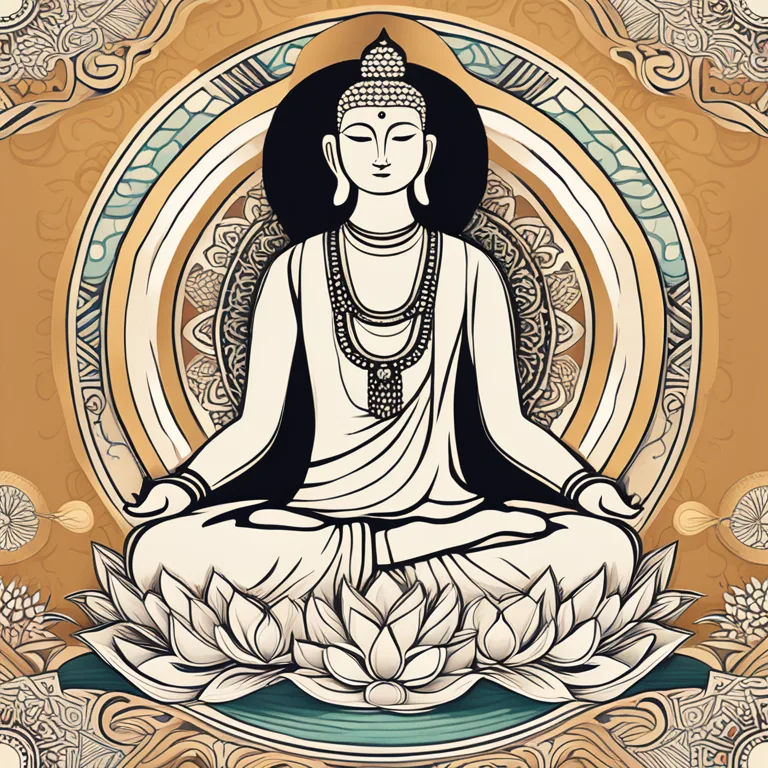
Harmony Through Repetition: Meditation Mastery
Discover the tranquility in repetition with meditation techniques that promote inner peace and mental clarity.
article by Hina Kurosawa
Foundation of Repetitive Meditation
Meditation, an ancient practice, has stood the test of time, proving to be an essential aspect of holistic well-being. At its core, meditation often involves the embrace of a peaceful repetition, whether it's through the rhythm of breath, the whisper of a mantra, or the gentle pattern of movement. This central feature creates a conduit for practitioners to delve into deeper states of consciousness, where the noise of external life fades into the background, inviting serenity and balance. A study, indicative of our ever-evolving understanding, states that repetitive meditation aids in stress reduction and the enhancement of concentrated focus.

Common Repetitive Techniques
Among the plethora of meditation styles flourishing today, several emphasize a repetitive focus. Mindfulness meditation, for example, is built on the repetition of observing one's breath and bodily sensations. Mantra-based practices such as Transcendental Meditation involve the silent recitation of a word or phrase. Circulatory movements such as in Qigong or Sufi Whirling can serve a similar purpose, leveraging physical repetition to hone mental awareness. Each method, distinctive in approach, aims to harness repetition as a means to anchor the mind in the present.

Neurological Benefits of Repetitive Focus
The impact of repetitious meditation extends beyond subjective feelings of peace; neuroscience research has unveiled that these practices can rewire the brain's pathways. As one consistently integrates these techniques into daily life, brain scans show increased grey matter in regions associated with attention, emotional regulation, and self-awareness. Furthermore, the predictable nature of repetitive actions can produce a state akin to the 'flow' experience, marked by heightened creativity and reduced cognitive stress.

Incorporating Repetition into Daily Practice
Initiating a meditative routine with repetitive elements need not be daunting. It can be as straightforward as allocating a few minutes each day for focused breathing exercises. With the digitalization of wellness in 2024, there's no shortage of apps and online resources to guide newcomers. Virtual reality meditations have also hit the scene, providing immersive, repetitive soundscapes and visuals that can transport a person into calm environs, thus making meditation more accessible and engaging.

Adapting Techniques for Individual Needs
Individuals are encouraged to explore different techniques of repetitive focus to ascertain what resonates. What works for one might not for another; hence personalization is key. For those with a kinetic disposition, walking meditation can be an ideal choice, integrating gentle, rhythmic pacing with mindful observation. Conversely, those seeking stillness might find solace in the soft repetition of a guided imagery session, where repeated mental visualizations can conjure an inner haven of tranquility.
Future Prospects in Meditative Repetition
Looking ahead, the landscape of meditation is poised to continue its evolution. The fusion of technology and tradition enables tailored experiences that cater to the individual’s unique preferences, even potentially aligning with biorhythms or astrological insights for optimal timing and impact. As researchers probe deeper into meditation's neuroplastic benefits, society's trend towards customized holistic wellness will no doubt further embed these time-honored techniques into the fabric of modern living.
Published: 1/8/2024
Modified: 1/8/2024
More predictions
Come back here soon to learn more about yourself and your future


Meditation Techniques For OCD
Mindful practices to help manage Obsessive-Compulsive Disorder symptoms effectively through meditation.


Mindful Meditation Practices Explained
Discover techniques to enhance your mindfulness through meditation, fostering peace and clarity in your daily life.


Meditation Techniques to Soothe OCD
Discover meditation practices designed to help manage OCD symptoms through mindful awareness and relaxation.